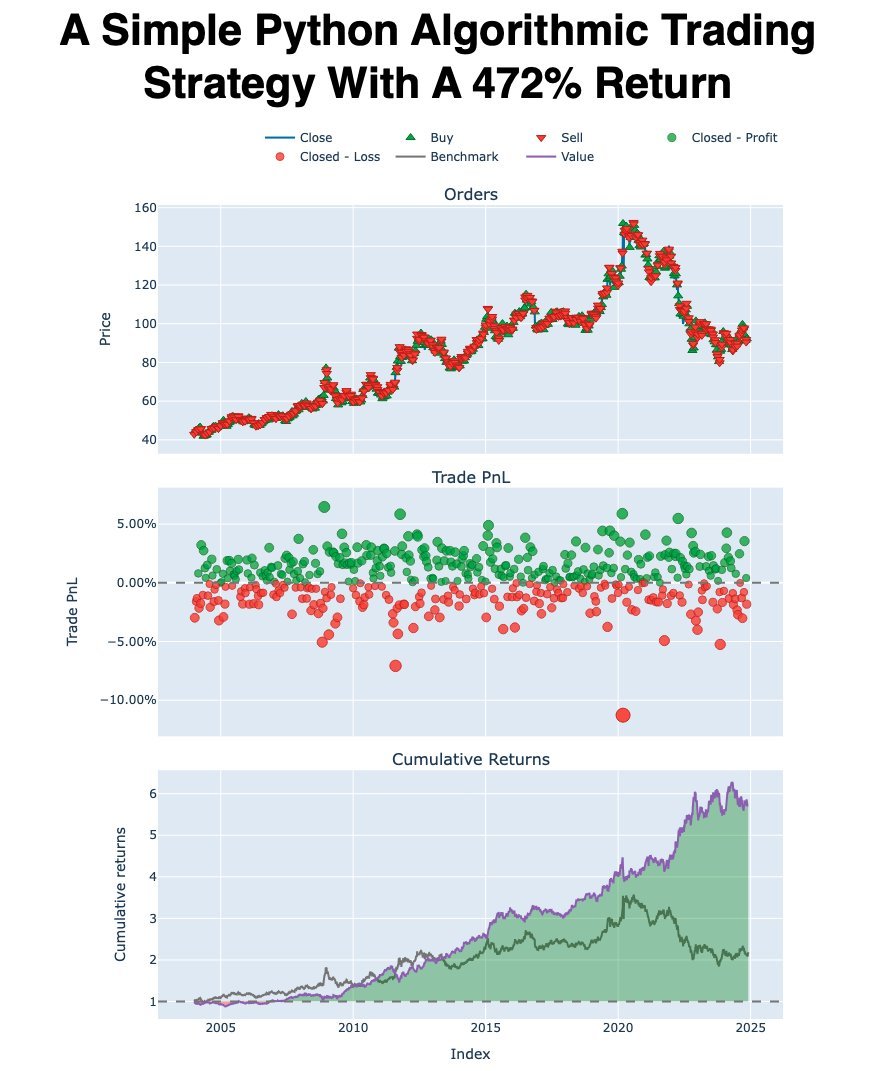How to build an algorithmic trading system with Python
(based on 3 years of fixing mistakes and gaining confidence + results)
A thread:
(based on 3 years of fixing mistakes and gaining confidence + results)
A thread:

Today I want to share a little bit about what I've learned along my journey in algorithmic trading.
It took me 3 years to grow my confidence.
I made a ton of mistakes. But now my portfolio is $6,500,000.
I'm still learning. But here's what worked for me:
It took me 3 years to grow my confidence.
I made a ton of mistakes. But now my portfolio is $6,500,000.
I'm still learning. But here's what worked for me:
1) Data Sourcing & Quality
• Start with reliable financial data.
• Scrub for inconsistencies & fill missing values.
• Free data sources exist, but for serious work, consider paid APIs (e.g., from broker APIs or market data providers).
• Start with reliable financial data.
• Scrub for inconsistencies & fill missing values.
• Free data sources exist, but for serious work, consider paid APIs (e.g., from broker APIs or market data providers).
I use these 2 data sources (paid):
• Nasdaq DataLink (Bulk price data)
• Financial Modeling Prep (fundamental data)
To get started I recommend these free resources:
• yfinance
• openbb
• Nasdaq DataLink (Bulk price data)
• Financial Modeling Prep (fundamental data)
To get started I recommend these free resources:
• yfinance
• openbb
2) Alpha Model
• Core logic: generates buy/sell signals.
• Could be mean reversion, trend following, or ML-based.
In Python, I perform quant research with:
pandas,
NumPy,
scikit-learn
I use these to test different hypotheses quickly.
• Core logic: generates buy/sell signals.
• Could be mean reversion, trend following, or ML-based.
In Python, I perform quant research with:
pandas,
NumPy,
scikit-learn
I use these to test different hypotheses quickly.
3) Portfolio Construction
• Allocate positions based on signal confidence & risk tolerance.
• Use Python frameworks (e.g., Riskfolio for optimization).
• Equal-weight, risk-parity, or custom weighting—depends on your strategy & risk profile.
• Allocate positions based on signal confidence & risk tolerance.
• Use Python frameworks (e.g., Riskfolio for optimization).
• Equal-weight, risk-parity, or custom weighting—depends on your strategy & risk profile.
4) Transaction Costs & Execution
• Account for commissions, slippage, and order types in your backtests.
• Model these costs realistically (even if estimates).
• Python tip: incorporate slippage/commissions logic directly into your trade simulations
I use Zipline & VectorBT
• Account for commissions, slippage, and order types in your backtests.
• Model these costs realistically (even if estimates).
• Python tip: incorporate slippage/commissions logic directly into your trade simulations
I use Zipline & VectorBT
5) Risk Management
• Ongoing monitoring of drawdowns & exposure.
• Set stop losses, trailing stops, or volatility-based position sizing.
• Tools like pandas & plotly help visualize risk metrics & performance over time.
• Ongoing monitoring of drawdowns & exposure.
• Set stop losses, trailing stops, or volatility-based position sizing.
• Tools like pandas & plotly help visualize risk metrics & performance over time.
7) Putting It All Together
• The pipeline: Data → Alpha → Portfolio Construction → Execution → Risk Management.
• Write modular code to keep each component testable & maintainable.
• Start simple; refine iteratively as you gain insights.
• The pipeline: Data → Alpha → Portfolio Construction → Execution → Risk Management.
• Write modular code to keep each component testable & maintainable.
• Start simple; refine iteratively as you gain insights.
Want to learn how to get started with algorithmic trading with Python?
Then join us on February 12th for a live webinar, how to Build Algorithmic Trading Strategies (that actually get results)
Register here (500+ registered): learn.quantscience.io/qs-register
Then join us on February 12th for a live webinar, how to Build Algorithmic Trading Strategies (that actually get results)
Register here (500+ registered): learn.quantscience.io/qs-register

• • •
Missing some Tweet in this thread? You can try to
force a refresh
















